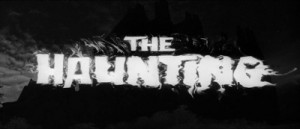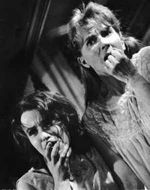Last year, I posted a few articles during the week leading up to Halloween. At the time, it had been my intention to write one article a day on different topics. But real life stepped in and I had to stop after Werewolves and Ouija Boards. Alas.
I’m taking another swing this year. For many reasons, Halloween is my favorite holiday and I thought it might be fun to try a “Best Of…” approach this year, enumerating the scariest things I’ve seen, heard, read, and experienced.
Let’s start easy and work our way inward towards the core, where the really scary things are…
A ghost story relies on a recipe, a delicate balance of flavors and textures: Suspense, fear, humor, sympathy, and restraint. That last element is key to a good ghost story, which is why there are so many bad ones.
There are lots of scary movies, chainsaws and rubber mask monsters. Like junk food, they satisfy a craving and can even be enjoyable. But they don’t give you much beyond the momentary pleasure and (perhaps) an unhealthy craving for more. No one fondly remembers that great Big Mac they had back in 1983 — although you might remember your first, in the same way you might remember the first scary movie you saw.
Full disclosure: I don’t like being afraid.
But for many reasons, ghost stories have a fond place in my heart. I don’t particularly care for Horror as a whole. Despite coming of age in the ‘80’s, I never had much interest in the serialized attacks of Freddy, Jason, and Michael Meyers. But I’ve never been overly fond of junk food either. And the current generation of Saws, Hostels, et al interest me not in the slightest. There may be technical skill in their making, they may share many of the ingredients that I appreciate in other recipes, but they are for the most part distasteful to me and I don’t understand their apparent wide appeal. But I feel the same way about KFC’s dinner bowls, so…
(Writing this, I think there’s something to be said for many of the Asian films that have been released in recent years. I’ll take a Ju-on or The Eye over their American counterparts any night of the week. There may be a food equivalent there as well, preferring Chinese take-out to American fast food. But I digress…)
But a ghost story — at least, the ones I think work best — isn’t meant to scare you, not really. Stories, whatever their stripe, are meant to be remembered. A good story, a good ghost story, stays with you. It’s hovering there in the back of your head when you’re driving home, when you’re getting ready for bed. It’s there on the edge of the bed as you’re falling asleep.
A good ghost story, yes, it haunts you.
There’s more to it than that, though. I think that a ghost story works best when, at it’s heart, it isn’t scary but sad. The underlying story of a movie like Shyamalan’s The Sixth Sense — which is actually a number of ghost stories artfully stitched together — is founded not on fear but on a genuine, human quality. At it’s core, that sadness sets up a chain reaction with the scary elements, creating a reciprocating, oscillating wave of sorrow and fear which is, ultimately, extremely fulfilling and enjoyable.
But, as great as I think it is, The Sixth Sense isn’t the movie I want to write about today.

It was Halloween, maybe twelve or thirteen years ago. I’d taken my son out trick or treating earlier in the evening, bringing him home against his protests that his bag “wasn’t all the way full yet.” I’d monitored the door with my candy bowl at the ready until the doorbell stopped ringing. I put the boy to bed and shut off the porch light — that universal symbol of Closing Time — and headed downstairs to see what TCM was showing for their Halloween night programming.
By sheer luck, I turned on the television just as the opening moments of Robert Wise’s The Haunting were beginning. I’d heard of the movie and Shirley Jackson’s book, but I’d not been exposed to either one.
Needless to say, I was in for a treat. For two hours I sat transfixed as the story rolled over me like a storm, all stillness and thunder punctuated with bursts of staccato, lightning-fast shock.
Smarter people have written more — and with more insight than I could hope for — about this movie and the masterful emotional and technical achievement it represents.
Suffice it to say that, somehow, Wise puts you in the house. You’re right there, experiencing the story first-hand in a way that few other movies manage to accomplish. Part of the recipe is the restraint Wise shows throughout, of course. Much of it is Nelson Gidding’s script and how he holds back on information, never letting the audience outpace the characters as they move through the story.
One of the best examples of these qualities is how Wise puts you right next to Eleanor and Theodora when that unseen, insistent pounding comes up the hallway towards the door of their room.
This is a movie that typically make’s everyone’s “Best Of…” list. Everything they say about it is true. Not only is it a great scary movie, it’s a great movie. Invariably, most of the credit for this is ascribed to a twist of fate. The legend is that Wise didn’t have a budget for special effects, which makes his unconventional use of sound and camera angles all the more powerful. The unknown, the unseen is far more terrifying that the rubber mask.
But Wise has excellent material to work with nonetheless. The performances are pitch-perfect across the board. The screenwriting accomplishes something uncommon — something that I don’t say lightly — by improving upon the source material. The movie is (with apologies to Ms. Jackson, whose work I love) better than the book.
But yes, the film is somewhat dated and slips into melodrama during a few scenes. But to my eyes, that actually enhances the effect. It’s quaintness, it’s charm sets you at ease — so much so, that you don’t notice that your own growing dread as the story progresses.
And it’s a story that stays with you, it resonates long after the credit roll. And not just as something recalled in the dark, starting at the sounds of an old house settling around you. The genuine, human quality of the story — Eleanor’s yearning for a home, a place of her own — is as haunting and resonant as any tragedy.
It reminds us that ghosts are just like us, they’re human beings with their own stories, trapped in their own sadness.
And, if we’re not careful, we might end up the same way.
